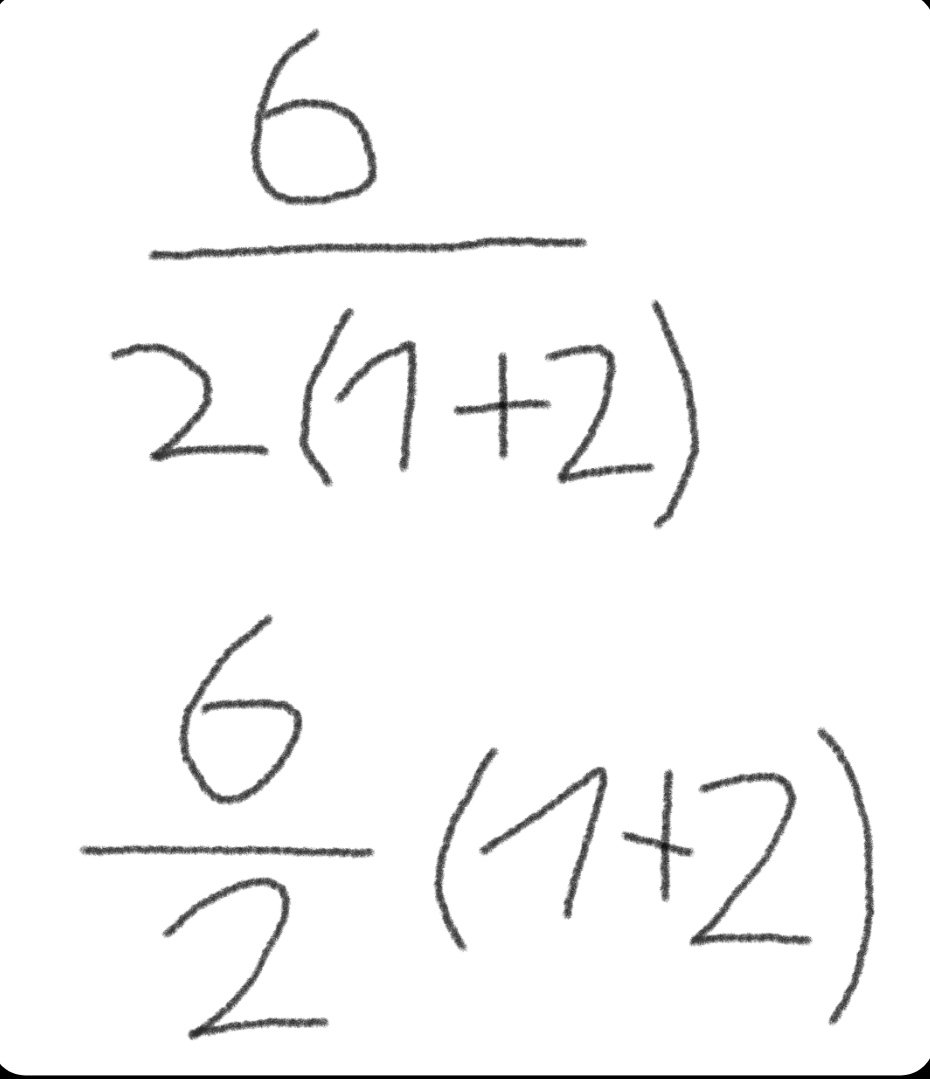this post was submitted on 28 Oct 2024
23 points (100.0% liked)
chapotraphouse
13547 readers
22 users here now
Banned? DM Wmill to appeal.
No anti-nautilism posts. See: Eco-fascism Primer
Gossip posts go in c/gossip. Don't post low-hanging fruit here after it gets removed from c/gossip
founded 4 years ago
MODERATORS
you are viewing a single comment's thread
view the rest of the comments
view the rest of the comments

I just realized where the confusion is coming from:
A fraction written in the formation as shown in the image has implicit parentheses over the numerator and the denominator (as well as the entire fraction) that need to be explicitly written when converted to single-line form.
The rest of my response is just for extra clarification
If we assume the second equation is true, then the first would have to be represented as (6 * (1 + 2)) / 2, which is (6 * 3) / 2, which is 18 / 2, which is 9. This means the mistake was made by multiplying the fraction with (1 + 2) by incorrectly placing it in the denominator instead of the numerator. I think the image is supposed to be a tongue-in-cheek troll as the two equations are non-preserving transformations of each other. It's a common mistake that is made in arithmetic.Here are the equations in WolframAlpha:
https://www.wolframalpha.com/input?i2d=true&i=Divide%5B6%2C2%5C%2840%291%2B2%5C%2841%29%5D
https://www.wolframalpha.com/input?i2d=true&i=Divide%5B6%2C2%5D%5C%2840%291%2B2%5C%2841%29
Unfortunately the step by step solutions are now locked behind a subscription.
Both problems are valid on their own. There's no correct interpretation. If we want to assume they were supposed to be equal to each other, this means one was incorrectly transformed from the other due to common mistakes that occur with two-dimensional fractions. The horizontal line between a fraction is not equal to / without implicit parentheses applied, otherwise the horizontal line would only apply to the first number, which is not the point of a two-dimensional fraction.